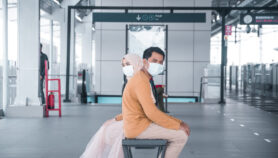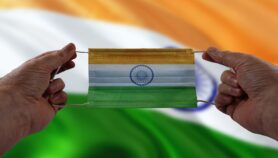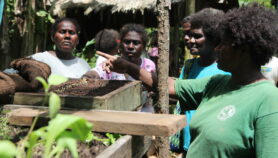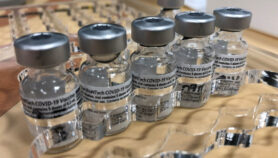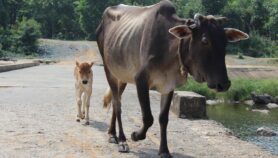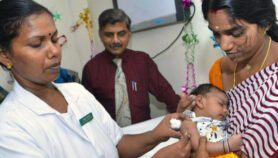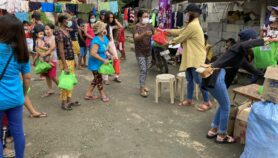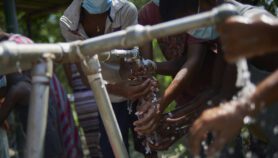08/06/21
Nepal seeks global help to fight COVID-19 wave
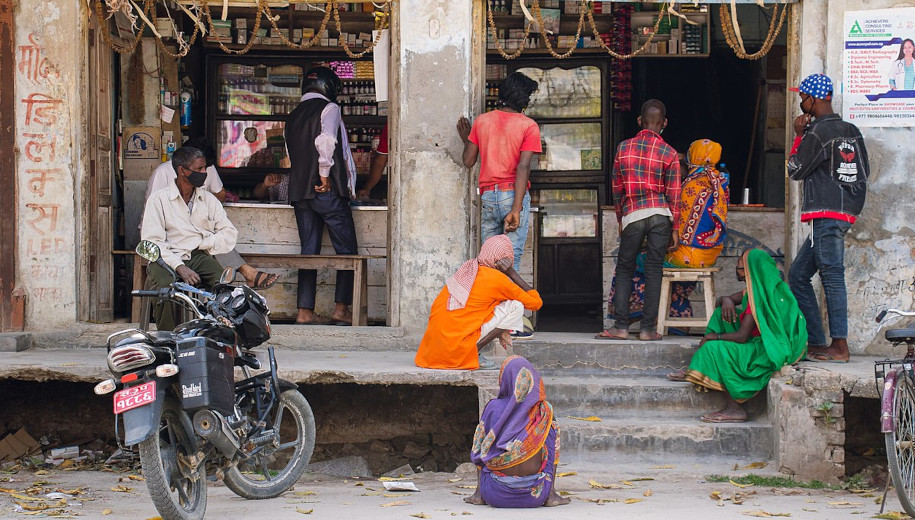
By: Rojita Adhikari
Send to a friend
The details you provide on this page will not be used to send unsolicited email, and will not be sold to a 3rd party. See privacy policy.
With healthcare resources overwhelmed by a second COVID-19 wave, Nepal seeks international help.
[KATHMANDU] Bhakta Bahadur Magar, 45, lost his life at the Tribhuvan University Teaching Hospital, Kathmandu, Nepal on 23 May because he could not get treatment in an intensive care unit for COVID-19.
“My brother fought for 22 days. We tried hard to get him an ICU bed but were unable to,” says his 49-year-old sister Mina. “I saw him desperately fighting to be alive, he did not want to die. I am so angry and sad that we could not save him. I want to cry out loud so that this government will listen to my pain.”
A second wave of the pandemic is now ravaging Nepal, one of the world’s least developed countries, overwhelming its feeble and overstretched healthcare system. Hospitals are running out of beds, oxygen and ventilators, and people are dying in their homes as hospitals turn away COVID-19 patients.
Nepal’s government has appealed for international aid to support the country’s battle against rapidly rising COVID-19 cases. Daily confirmed cases in the Himalayan nation increased by more than 1,000 per cent from mid-April to mid-May, with a positivity rate of almost 50 per cent and a death rate higher than India. As of 7 June, Nepal’s COVID-19 tally stands at 591,494 including 497,960 recoveries and there are 85,554 active cases with 7,990 fatalities.
Subin KC, 23, has been searching for oxygen to take to his grandmother at the state-run Bir Hospital in Kathmandu.
“Our grandmother’s health is deteriorating and the doctor has asked us to fetch oxygen as the hospital is running out of it,” he says. “It’s not easy to buy oxygen. I have to stand in a queue for hours and there is no guarantee that I will get a cylinder.”
The situation is similarly dire at private medical facilities.
Bikash Burma, 30, and his 20-year-old sister Anjali Burma watched their 58-year old mother being cremated at the Pashupati crematorium in Kathmandu. “We took our mother to [Nepal] Mediciti Hospital, an expensive private hospital in Kathmandu thinking she will be safer there than in a government hospital. But the hospital ran out of oxygen and we lost our mom,” says Bikash.
“We could not [even] save her after spending US$6,000. I don’t know how my life will be without her,” says Anjali. “It’s all because of this careless government. My mum did not have other health issues.”
Poor healthcare facilities
Nepal’s health system was fragile even before the pandemic. There are only 194 hospitals with ICU facilities to serve its 29.6 million population. It has only 2.8 ICU beds per 100,000 people and only about 800 experienced or trained critical care nurses.
Most of Nepal’s health facilities are concentrated in urban areas and rural healthcare centres are underfunded. The poor have limited access to basic healthcare due to high costs.
“Forget about oxygen or ICU beds, there is a shortage of reservoir masks,” says Anju Chaudahri, emergency officer at Tribhuvan University Teaching Hospital. “Daily, four to five people die in the emergency section of our hospital. I can only watch — I can’t really do anything.”
Nepal is silently suffering. The country is reporting roughly 296 daily COVID-19 cases per million people, compared to India’s 231 daily cases per million. Due to a lack of testing, cases are almost certainly missing from official tallies. And because of gaps in healthcare services, cases are likely unreported, especially in rural areas.
The country now has one of the highest transmission rates in the world, with one in two people testing positive for COVID-19. The UN has called for urgent humanitarian aid.
We wouldn’t be asking if lives did not depend on it.
Please listen to our appeal and send help now.
↘️https://t.co/dlkV6SYURg #Nepal #COVID19
@WHONepal @unicef_nepal @mohpnep @MofaNepal @NepalUNNY @OCHAAsiaPac pic.twitter.com/iwFqRJdOke— Sara Beysolow Nyanti (@NyantiSara) May 21, 2021
Nepal has confirmed two new coronavirus variants — B.1.617.1 first recorded in the United Kingdom (also known as variant Kappa) and B.1.617.2 first detected in India (also known as variant Delta) — sublineages of the Indian double-mutant variant, classified by WHO as a variant of concern.
According to the result of gene sequencing from 35 districts across the country, the B.1.617.2 variant or Delta accounted for 97 per cent of samples, the health ministry said.
Vaccine, medical supply shortages
With India and Nepal sharing an open land border, it was perhaps inevitable that the devastating wave of COVID-19 currently afflicting India would spread to its impoverished northern neighbour.
In May, Nepal Red Cross chair Netra Prasad Timsina said: “What is happening in India right now is a horrifying preview of Nepal’s future if we cannot contain this latest COVID-19 surge.
“Nepal urgently needs support to save lives and treat people who are suffering. We will not succeed in overcoming this terrible disease until vaccines are available to protect everyone, regardless of nationality or income.”
Seven per cent of Nepal’s population has received a single dose of the vaccines but only 2.4 per cent of the population has been fully vaccinated. Two million doses were ordered from the Serum Institute of India, the world’s largest producer of vaccines. But because of its own crisis, India’s government paused vaccine exports in March, leaving Nepal a million doses short. The Serum Institute’s latest statement shows Nepal will not get vaccines, already paid for, before 2022.
Important Information pic.twitter.com/M1R1P6rqUp
— SerumInstituteIndia (@SerumInstIndia) May 18, 2021
“All over Nepal, hospitals are running out of oxygen and hospital beds, medicines, oxygen masks, etc. There are not even enough health workers,” says Sher Bahadur Pun, chief of the clinical research unit Sukraraj Tropical and Infectious Disease Hospital.
“There is neither enough testing nor tracking and tracing. We are in defensive mode not in controlling mode. The situation went out of control weeks ago — we can just wait and watch,” says Pun.
“We are in defensive mode not in controlling mode. The situation went out of control weeks ago — we can just wait and watch”
Sher Bahadur Pun, Sukraraj Tropical and Infectious Disease Hospital
The virus has been rapidly spreading to remote villages where test kits are scarce. In some parts of Nepal villagers may need to trek two or three days just to get a test for COVID-19.
On 2 June the chief district officers of Kathmandu, Bhaktapur and Lalitpur extended the ongoing lockdown until 14 June. The rest of the country is also under lockdown while vaccine doses, testing kits and other equipment await arrival.
“We are not able to increase testing because we don’t have enough testing kits,” says Samir Adhikari, health ministry deputy spokesperson. “We cannot combat this crisis without help and therefore we are appealing to the international community to help Nepal.”
Nepal has appealed to the international community for supplies of test kits, personal protective equipment, oxygen tanks, and ventilators.
While Nepal’s Prime Minister KP Sharma Oli has appealed for urgent international support through an article in The Guardian, the country’s President Bidhya Devi Bhandari has been in touch with her counterparts in different countries appealing for help.
President Bhandari spoke with Chinese President Xi Jinping over the phone last week and was assured one million vaccine doses as a grant. Consignments have already arrived in Nepal.
India, despite its own difficulties fighting COVID-19, gifted 30,000 testing kits to Nepal on 17 May and has also diverted two tankers of oxygen to be moved to its northern neighbour.
Sincere thanks to the Government of India for providing medical logistics and testing kits for 30,000 tests which were handed over to the Ministry of Health and Population today as a part of ongoing cooperation to fight the pandemic.
— Pradeep Gyawali (@PradeepgyawaliK) May 17, 2020
Sher Bahadur Tamang, Nepal’s health minister, said at a virtual press conference on Monday (7 June) that testing would be a priority.
“We believe the more tests we have, the more we can reduce the risk of further spread of the infection. Antigen test kits have been sent to every municipality to increase testing across the country,” Taman said.
This piece was produced by SciDev.Net’s Asia & Pacific desk.



